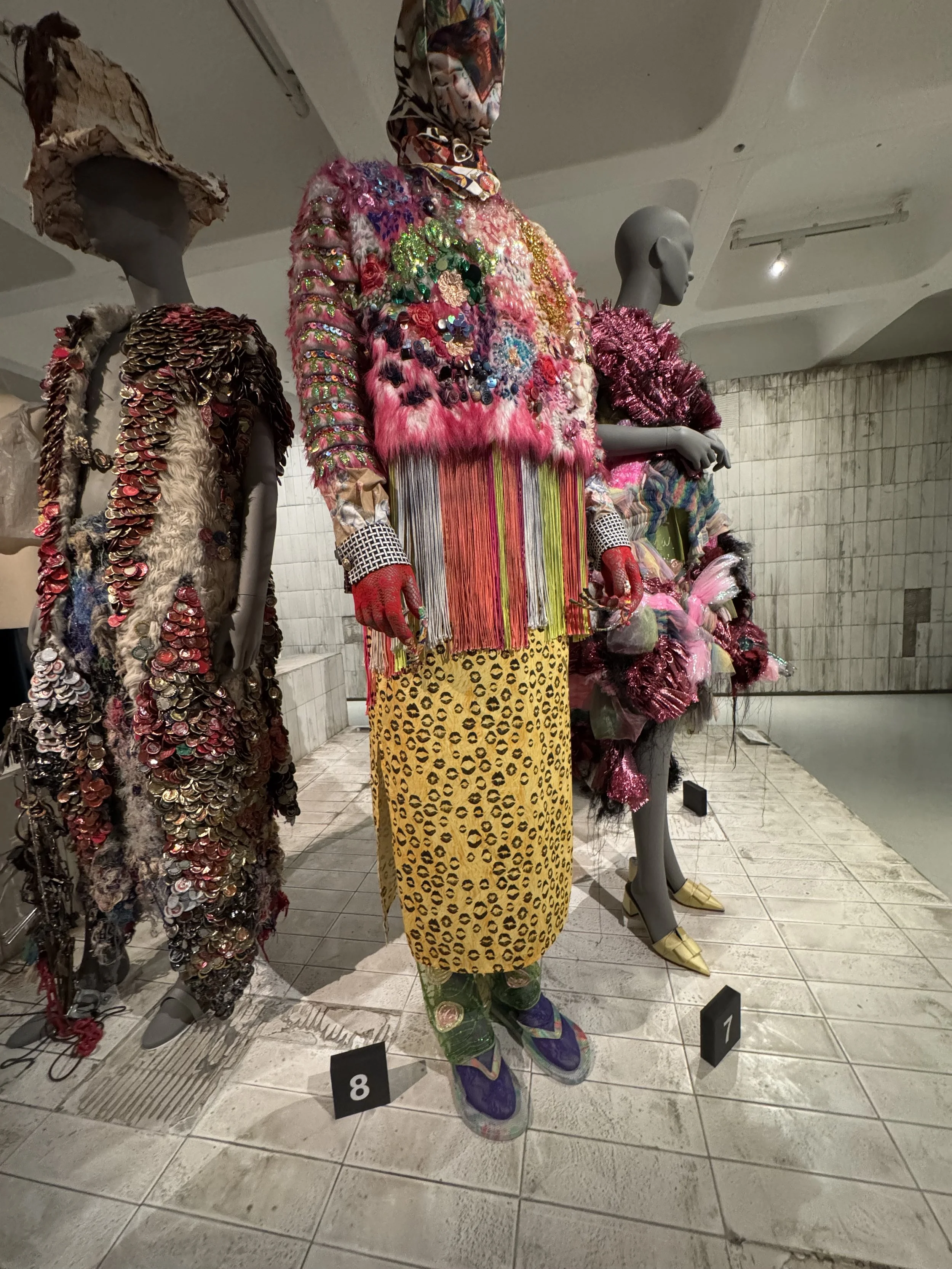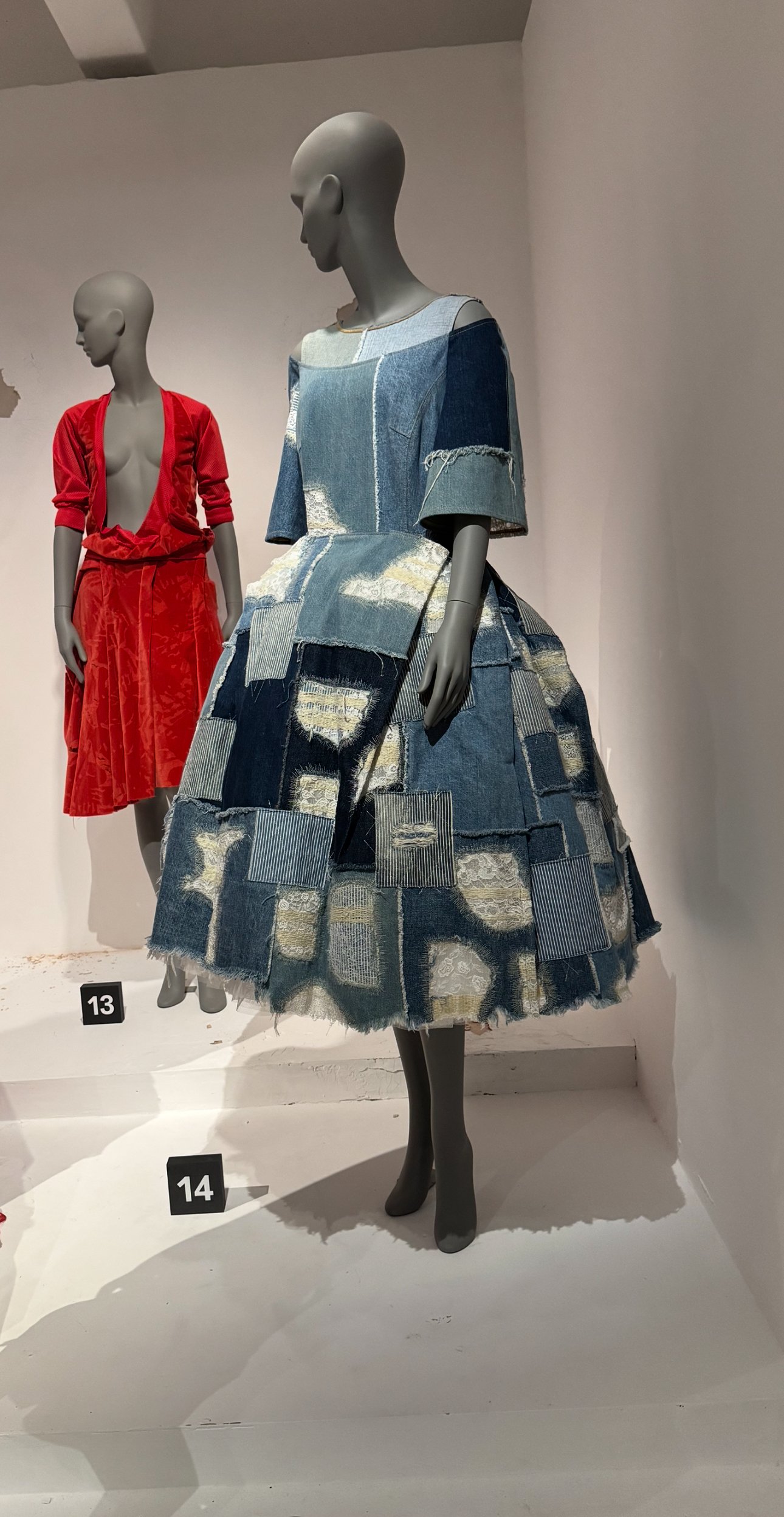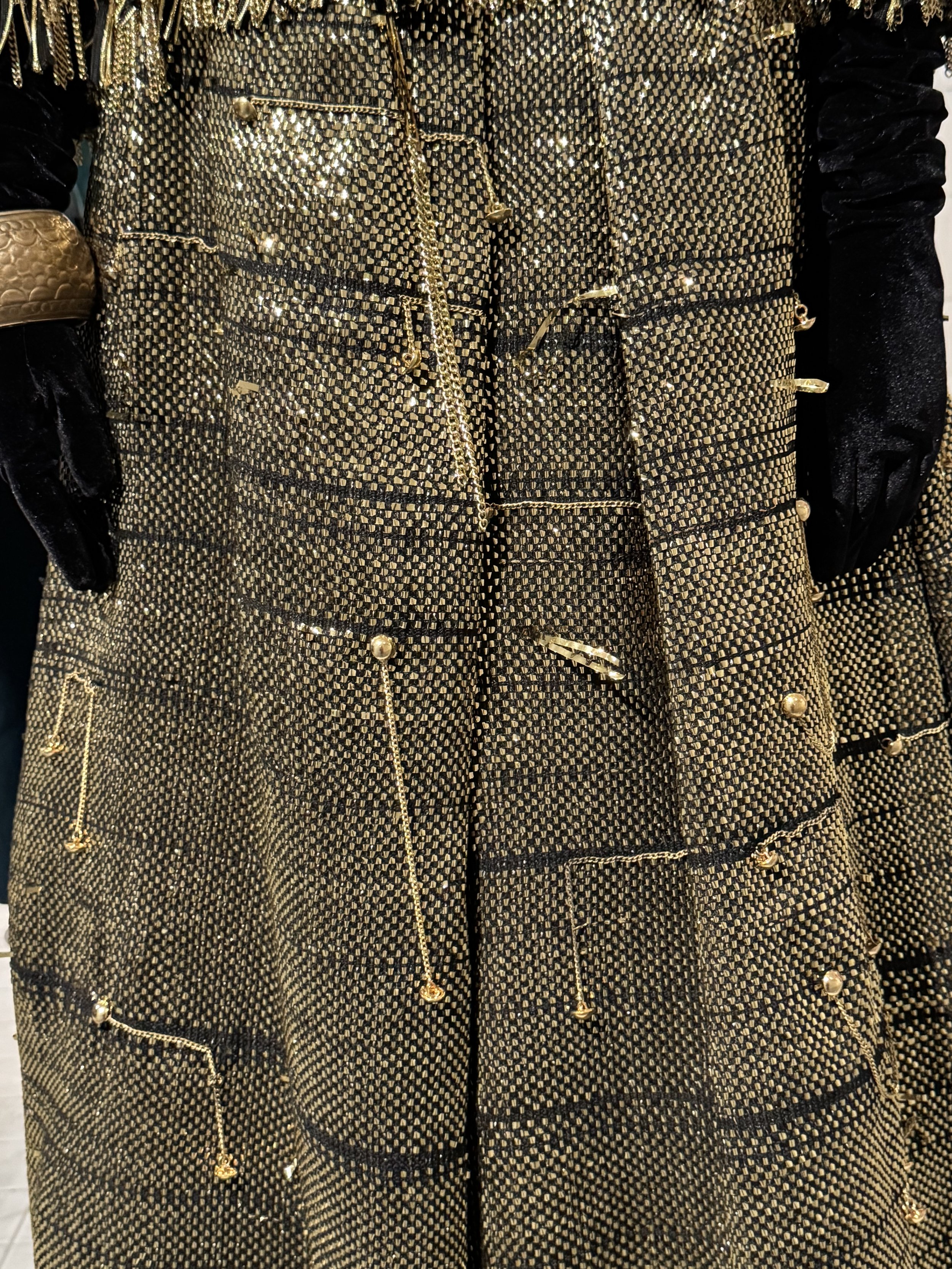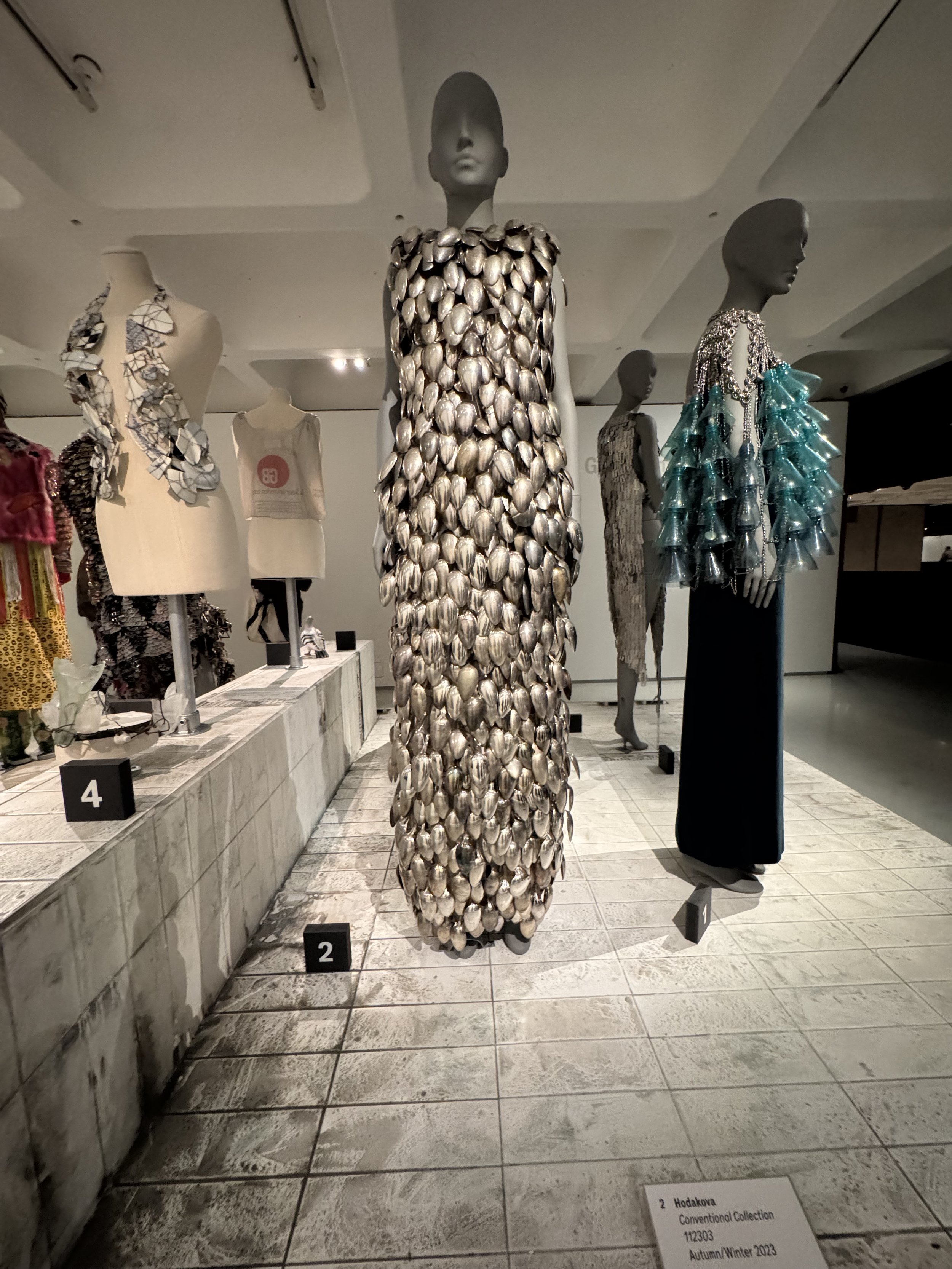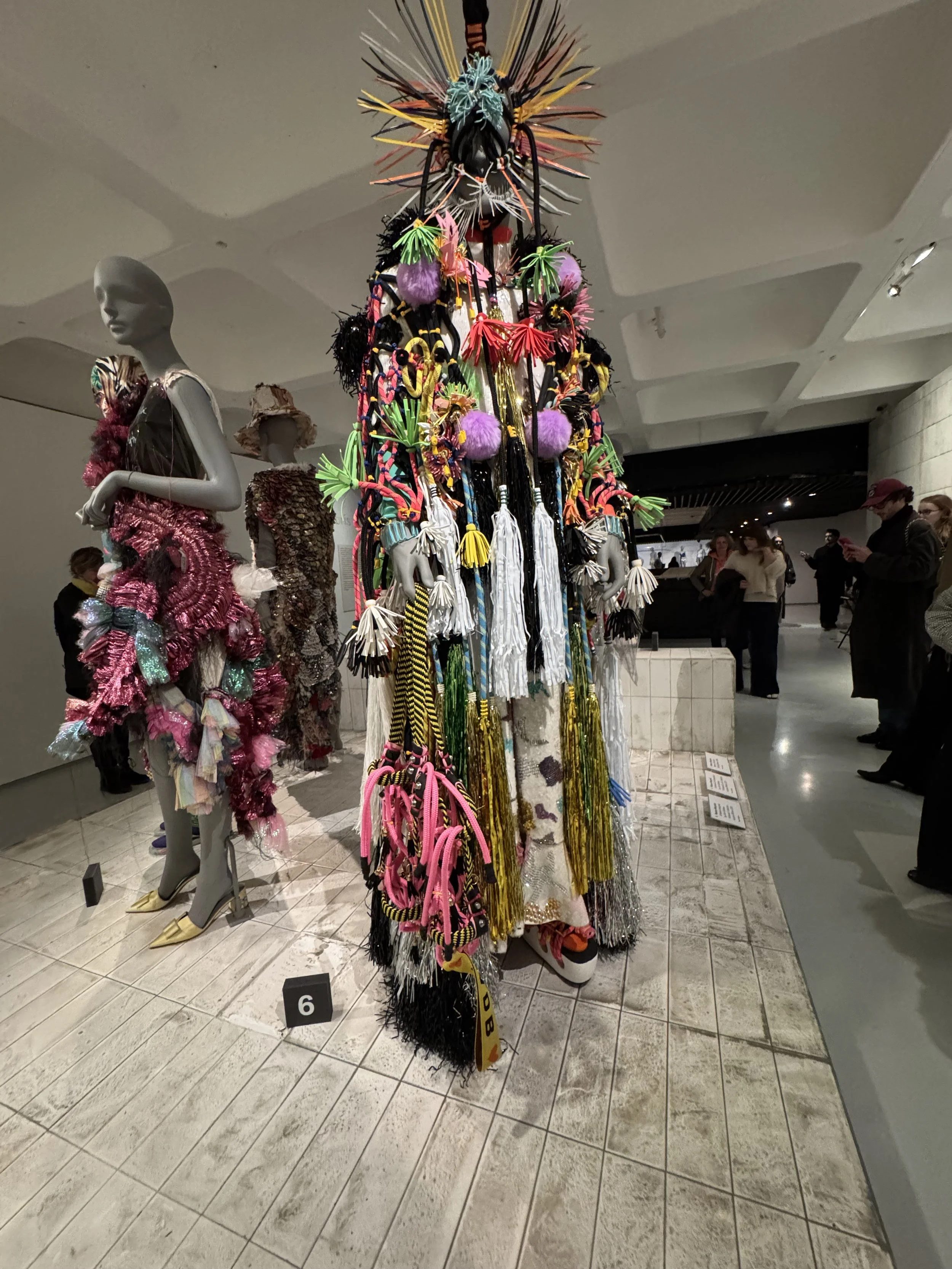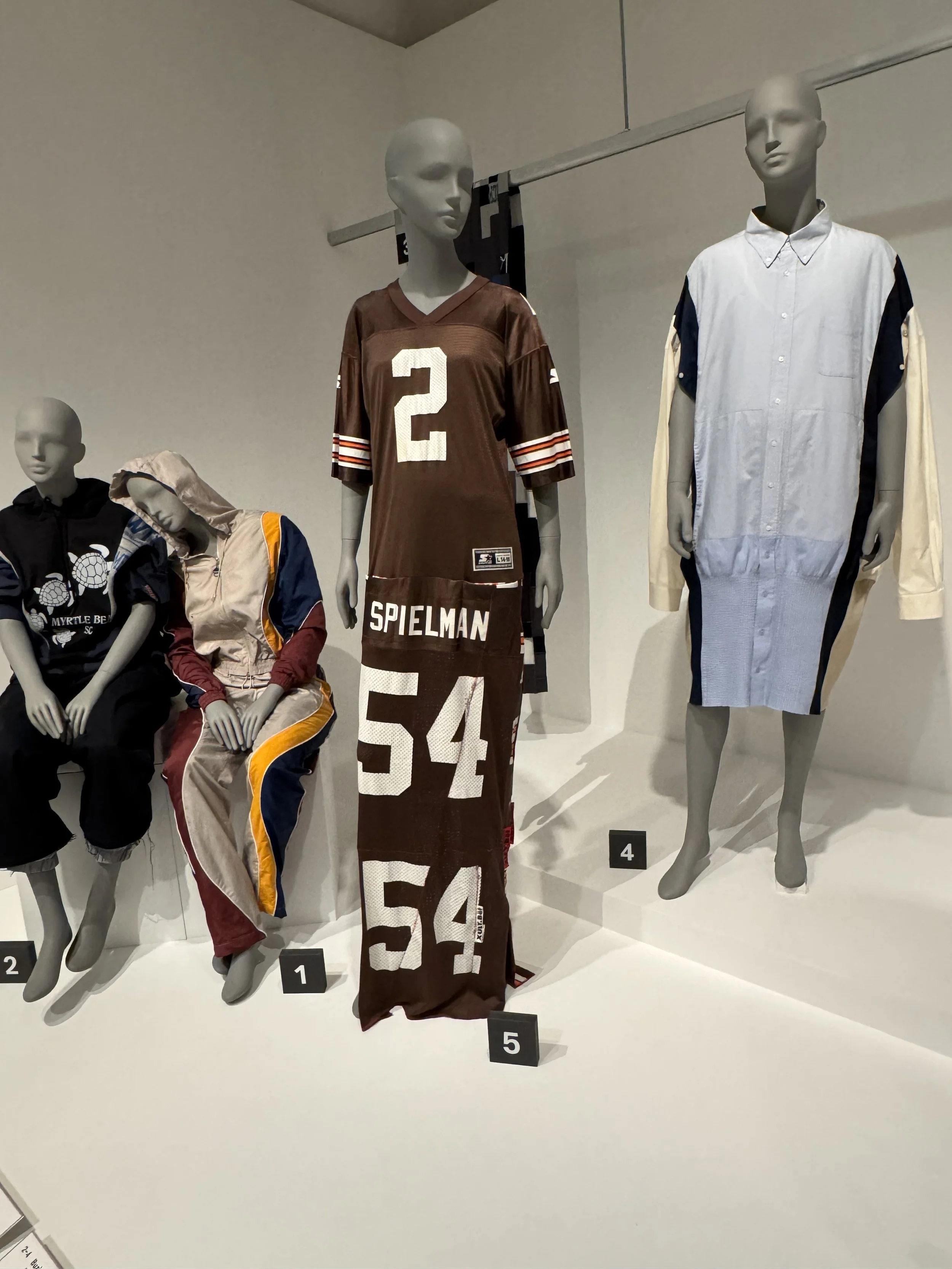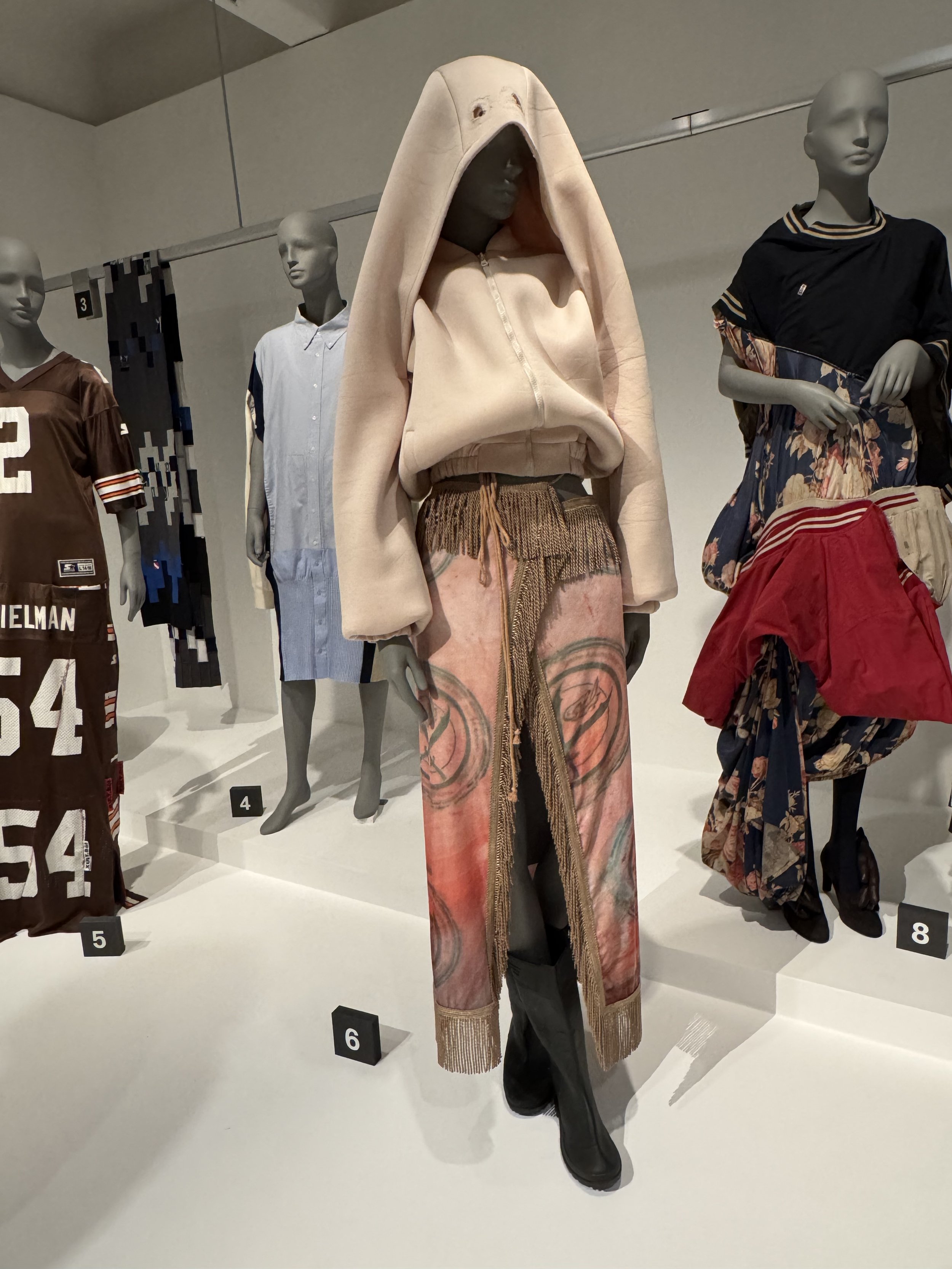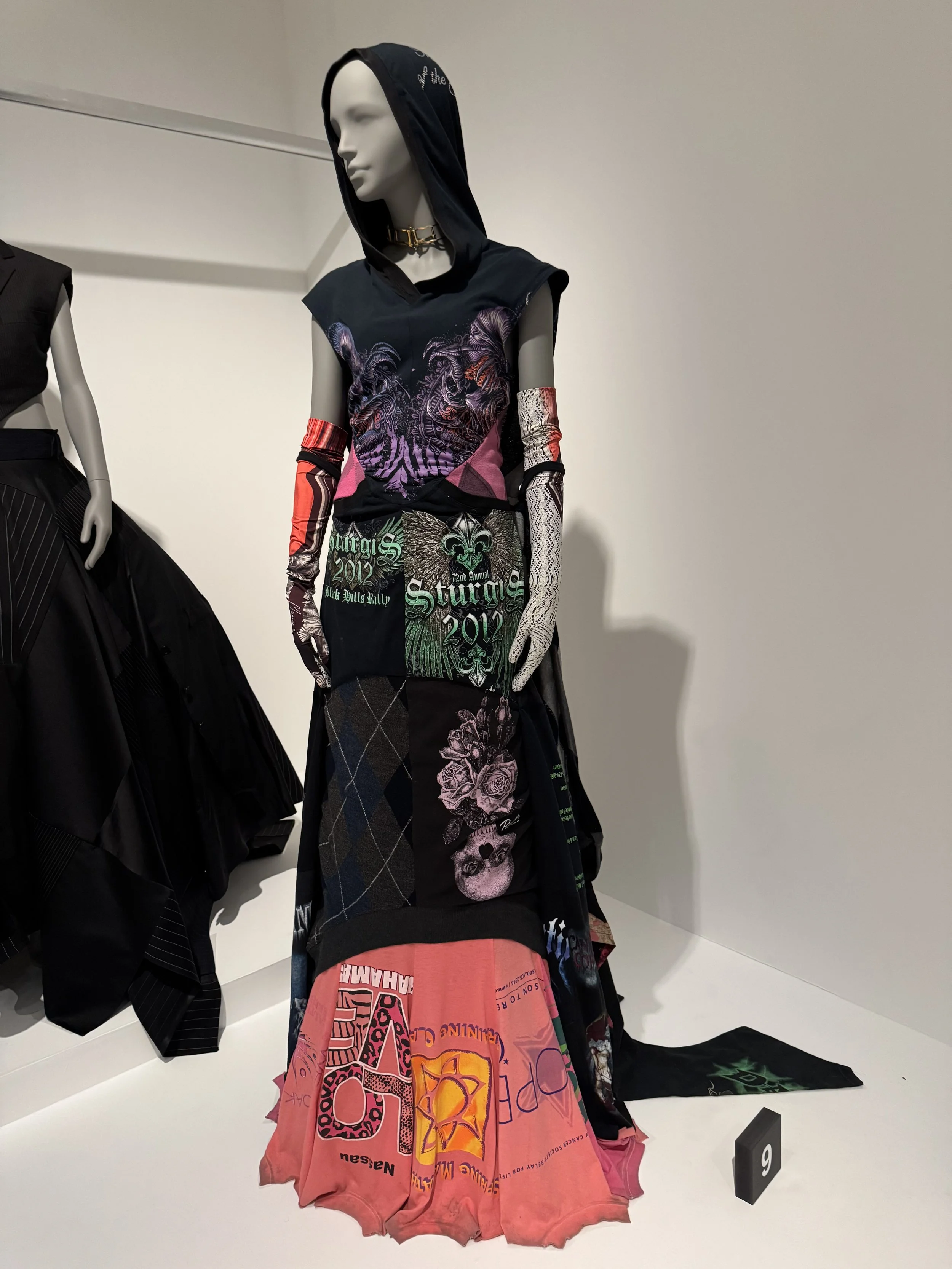Manon Kundig - From her 2012 Graduate Menswear collection called the Bowerbird.
The Barbican’s “Dirty Looks: Desire and Decay in Fashion” rips the gloss off fashion’s surface and digs into what’s underneath — the waste, the leftovers, the chaos. It’s a show about what happens when you turn trash into treasure and damage into design.
It’s not about sustainability as a buzzword — it’s about sustainability as an attitude.
Junya Watanabe 2019 Spring Summer Boroboro
Recycled, Reborn, and Reckless
Every piece in this exhibition has lived a life before.
There’s Hodakova, turning household cutlery and discarded glass into couture armor.
Tom Van der Borght, layering ropes, cords, and tassels into wearable sculptures that feel like joyful rebellion.
And then there’s Ronald van der Kemp, who proves that high fashion doesn’t need new fabric to look expensive.
Ronald van der Kemp — “Nikita, Let the Sun Shine In,” Haute Couture S/S 2025.
Ronald van der Kemp: Reworking Glamour
Van der Kemp’s gold gown — “Nikita, Let the Sun Shine In” — stops you in your tracks. It’s pure opulence, but made from discarded trimmings, pearls, and vintage metal chains. Every piece of gold thread and chain is rescued, reworked, and rewoven into something radiant.
This is couture with conscience — proof that luxury can be ethical without losing its drama.
While others chase the new, RVDK digs into what’s already here and makes it shine harder.
Ronald van der Kemp — “Nikita, Let the Sun Shine In,” Haute Couture S/S 2025.
Ronald van der Kemp — “Nikita, Let the Sun Shine In,” Haute Couture S/S 2025.
Handwoven from discarded trimmings, pearls, and vintage metal chains. Proof that circular fashion can still slay.
Hodakova: Silver Armor from Everyday Objects
Swedish designer Hodakova turns recycled metal spoons into a sculptural masterpiece.
The dress shifts and shimmers with every step — part sculpture, part rebellion.
It’s strong, feminine, and unapologetically clever — proof that sustainability can still stun.
Below- Hodakova — “Conventional Collection,” A/W 2023. Dress made entirely from recycled metal spoons. Industrial elegance redefined.
Below- Hodakova — “Conventional Collection,” A/W 2023. Dress made entirely from recycled metal spoons. Industrial elegance redefined.
Below- Hodakova — “Conventional Collection,” A/W 2023. Dress made entirely from recycled metal spoons. Industrial elegance redefined.
Paco Rabanne: The Original Recycler
Long before “eco-fashion” was a trend, Paco Rabanne was already transforming the ordinary into the extraordinary.
His Haute Couture A/W 1992 look — a top made from cut plastic bottle tops linked together with metal chains — still feels futuristic.
It’s armour, shimmer, and statement rolled into one.
Rabanne was doing sustainability before it had a name.
Paco Rabanne Haute Couture 1992 A/W
Paco Rabanne — Haute Couture A/W 1992.
Top made from recycled plastic bottle tops joined by metal rings. A visionary take on waste as wearable art.
Tom Van der Borght
Tom Van der Borght: Chaos as Craft
Belgian designer Tom Van der Borght turns maximalism into a manifesto.
His 7 WAYS TO BE T.VDB collection is a joyful riot of texture — ropes, cords, plastics, and found materials woven into exuberant shapes.
In his hands, excess becomes emotion; chaos becomes couture.
Ahluwalia
1. Ahluwalia 2. Buzigahill 5.Xuly.Bet
5. Xuly.Bet 4.BuzigaHill 6. Trashy Clothing. 8. Miguel Adrover
Marine Serre’s hooded Hard Drive gown (A/W 2022)
Other Unmissable Moments
The exhibition doesn’t stop there. Among the standout pieces are Miguel Adrover’s emotionally charged Dress With a Soul Inside, Out of My Mind (A/W 2012), stitched together from reclaimed materials that feel almost autobiographical. Marine Serre’s hooded Hard Drive gown (A/W 2022) — crafted from vintage T-shirts and deadstock fabrics — glows like something salvaged from a future world. Nina Hollein’s Suit-Up Dress (2020) reshapes men’s shirts into a statement on quiet sustainability, while Maison Margiela’s archival Women Collection (A/W 2004) reminds us that deconstruction has always been part of fashion’s DNA.
And tucked quietly in the same room, a pair of seated figures in reworked sportswear — one an Ahluwalia piece — hint at the everyday roots of upcycling. A reminder that reuse isn’t just couture; it’s cultural
Beyond the Shine
Dirty Looks isn’t just about eco-fashion — it’s about redefining beauty itself.
These designers don’t hide the history of their materials; they celebrate it.
Every crack, scratch, and imperfection becomes part of the story.
Final Thought
Walking through Dirty Looks feels like stepping into a couture scrapyard — everything gleams, nothing goes to waste.
It’s a must-see show for anyone who believes fashion can be radical, emotional, and alive.
Because sometimes, the most beautiful things are born from what we almost threw away.

